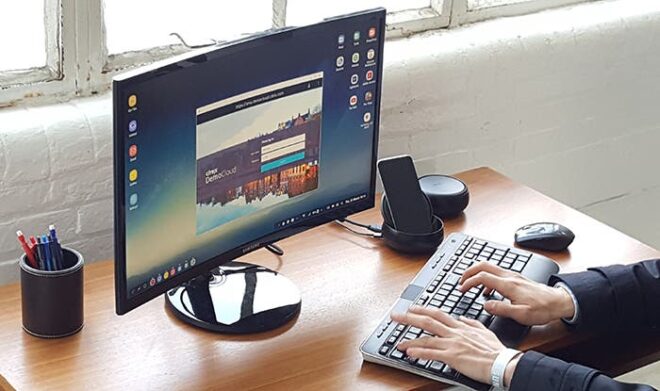So do you want to know how to install Android on a PC? Well, then I recommend you read the tutorial. Although Android is an operating system designed for mobile devices, there are many methods of using it on the PC. I believe that the ease of the system and the large universe of applications makes it a very comfortable working environment for many users.
Installing Android on a computer can be a tempting idea. As you know, Google’s operating system works great on smartphones and tablets, so there are many people who wonder what happens if we install Android on a PC.
Today, we show you how to install Android on your computer, either as the main operating system or by means of an emulator that will allow you to enjoy all the goodness of Android on your PC, without having to give up your main operating system. The guide we have prepared is for Windows, so we are sorry if you have a Mac.
How to install Android on a Windows PC
First of all, I want to warn you, Android is an operating system designed for smartphones and it’s not even optimized enough for tablets. On a computer, using Android as the primary operating system may not be a good idea, as it depends 100% on the Play Store applications, and these cannot be compared to those of computers.
If you have decided to continue installing Android on a Windows PC, here are the steps you need to follow. We are talking about a clean installation of an operating system on the computer.
Firstly, we need a USB stick to boot the operating system. We recommend using at least 4 GB of USB memory.
First of all, back up all your data, in the cloud, to an external hard drive or wherever you want, at the end of the installation all the programs and settings of the PC will be deleted, so keep it in mind.
From the android x86 page we will download the latest version available, one of the most stable and reliable versions of Android. In addition to the operating system, we download Rufus, the best free tool to create bootable USB drives.
After downloading both files, we open Rufus, with the Pendrive connected to the computer. Choose the connected USB drive and create a boot disk with the downloaded ISO. Make sure the Pendrive is in FAT 32 format before running the whole process, Rufus will tell you.
Once it’s all over, run Rufus. You will receive a warning from Windows asking if you want to allow Rufus to make changes to your device by simply clicking on “Yes”.
With Rufus running, go ahead and choose the USB drive from the list in the drop-down bar at the top.
This is a crucial step in getting exactly what we want, as Rufus will erase everything in the unit in question. If you have inserted multiple removable drives into your PC, check the drive letter to make sure you select it correctly.
The Pendrive is already formatted, in FAT 32, the Android ISO was loaded and we made sure that the partition type is MBR, BIOS or UEFI. Now you can press Start in Rufus and create the bootable USB drive, from which we will start Android.
Now, to install Android on our PC, we need to boot it from the USB drive. To do this, we need to understand how we can enter our PC’s BIOS, and configure booting from a USB drive.
It may seem very difficult, but the BIOS menu is very intuitive, and you will have no problem finding this option. Currently, there are some laptops that automatically detect s and there is a Pendrive with an ISO, once we start our computer with the Pendrive connected, the installation process begins.
After selecting the USB drive from which the computer will boot, restart your PC and the installation process will begin. He will ask us if we want to install it in Live CD mode or on the hard disk. If you just want to try installing Android on your Windows PC, select the first option, if on the contrary, this will be your main operating system, select the second.
Congratulations! Once the installation process is complete, you will see the Android initial configuration menu. You will need to establish your WiFi connection, enter your e-mail account and do all the configurations you would do on your phone.
You have already installed Android on your computer, so be careful what you install, since Android is a somewhat vulnerable operating system.

